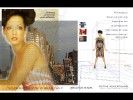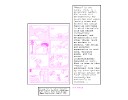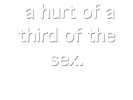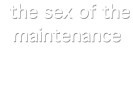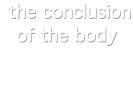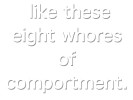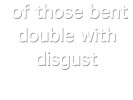Fictive Advertising – Conversion of periodical literature to product message delivery systems.
Â
A two page magazine spread, presented in NY Arts magazine, created as an artwork intended to critique magazine advertising.
Image Samples:
Download Medium Resolution PDF File:
Fictive_Advertising PDF
Â
Project Description:
Business/Economics, Symbol Systems/Myths and Dreams.
“The major media are large corporations, owned by and inter linked with even larger conglomerates. Like other corporations, they sell a product to a market. The market is advertisers – that is, other businesses. The product is audiences for the elite media, relatively privileged audiences. So we have major corporations selling wealthy and privileged audiences to other businesses. Not surprisingly the picture of the world presented reflects the narrow and biased interests of the sellers, the buyers, and the product.” – Noam Chomsky.
Culture jammers have been making fake ads for a while now. They usually involve hacking of a specific ad or campaign. “Subvertising.” Part of the hack is usually to attack a particular brand. With fashion “subvertisements” the most common ones are Calvin Klein and Tommy Hilfiger. Though this is powerful and effective, in some sense it’s like what Naomi Klein, author of “No Logo,” says about attacking corporations. A specific Multinational works as a handle to grab on to or rally against in order to get a point across, but the real problem which needs addressing is the hugely complex structure of global capital and trade agreement formation.
The problem is twofold. Part of the issue is the economics, and part of the issue is the meaning or symbol system. John de Graaf, Thomas Naylor, David Wann in their book “Affluenza: The All-Consuming Epidemic” describe consumerism as “a painful, contagious, socially-transmitted condition of overload, debt, anxiety and waste resulting from the dogged pursuit of more.” Yet people aren’t stupid, so what is going on?
Advertising is an important part of the structure. Its relation to the larger issue of global economic exploitation needs to be understood. In one way it can simply be read as giant corporations trying to poison our thoughts so that we consume endlessly more product. Yet a solely economic analysis of advertising does not get at the whole of the problem. Equally important is its fundamental relation to meaning in our culture. Advertising is amazing. Advertising is beautiful. Advertising uses what we care about, the deep seated and fundamental beliefs and longings in our culture. We have to see that advertising, for better or worse, is carrying a huge part of our cultural canon right now.
In the 1980’s people finally admitted to themselves that the point of businesses is not to provide products or services. The point is to make money. Because money, not service, is the ultimate goal, a bad product or service is just as effective as a good one, or none at all, if it makes money for the corporation. Provision of product or service is tangential to business. The two may happen to be in confluence at times but there is no guarantee or even need for them to be. It’s quite possible that the less of a product you have and the less you pay workers to produce it the more profit you garner.Â
Similarly, advertising is not about a product or service, but rather about getting as many people as possible to consume. It is not the product which is sold but the sense of a lack in the potential consumer. A combination of a dream and a sense that it is as yet unfulfilled – and that consuming will consummate the new hope or dream. People focus on this rather than other types of activity which might be helpful for them, but which might disrupt the status quo. This is the heart of the second part of the problem, the symbol system.
As Andrew Boyd of the culture-jammer mime campaign “Billionaires for Bush (or Gore)” notes “advertising imagery is the ultimate stealth virus. It has long been post or pre rational, operating by subconscious association, by veiled promise and threat, by mobilizing our longings and our dream world. Rational critique can’t find a handle by which to challenge such a worldview.”
Though advertising can seem trivial, it is actually carrying inside it our most prized beliefs. Further, it is one of the main avenues of dissemination for these important cultural concepts. Some of the finest artists in the world work in it, and they receive a great deal of prestige and recognition for doing so. It is in some way similar to shamanistic practice in folk societies. Not that it is arcane or inscrutable but rather that it involves practitioners or technicians who must get at the heart of the collective dreams within a culture and then harness these. The sacred practitioners do it partly for their own ends, but also to move the culture forward in some ideal path they perceive as right, based on their reading of the dreams and traditions.
Fashion, too, can seem frivolous and inconsequential, yet when anthropologists study a culture, the clothes they wear, and the daily things they surround themselves with, tell a tremendous amount about who they are, how they live, what they care about, and how they see their place in the cosmos.
A lot of how we understand the world still comes from myths buried deep in our general culture’s understanding. Advertising works on these myths, within the subconscious symbol system. Brands are little different from Totems. Providing strength, coherence, a path or organizing principle – a community of the like minded. A special society or group, separate from the others, a definition of self.
I don’t think there can be an easy dismissal of advertising, despite its huge negative impact on creating a sustainable future, because its function is so central to our social structure and because it is working directly with our core cultural beliefs. The key is to acknowledge the beauty and at the same time critique the structure.
Rather than spoof a particular brand, “Fictive Advertising” is an attempt to make reference to a host of styles, reflecting the entire genre of advertising. The use of the sexy dresses is an allusion to couture and high end ready to wear. The architecture refers to the anomic landscapes and empty urban environments used to promote hip hop sportswear. The little boxes and multi-section layout come from interior design ad aesthetic, and the wire frame or spot illustration comes out of youth culture alt/skate punk lifestyle looks.
Economic exploitation around the globe causes hate at being oppressed. We are belatedly waking up to this obvious fact. Terror is not justifiable. Ever. Period. We as a culture are not to blame for terror. It is also a poor tactic in that it leads to more oppression. Yet the problem is that human suffering and human rights violations are coming back to haunt us, as normal people in exploited nations choose to support fanatics as the only way they see out of their own oppression. If they were actual participants in the largess of the global economic structure they wouldn’t want to destroy it, as they would be hurting themselves. Instead, we get the hard earned value of their labor, and they are left hopeless and desperate. Meanwhile, we are constantly encouraged to want to get more. All of this economic truth is also hiding behind ads.
Despite the concerted efforts of the World Bank and the WTO, I do not believe there is a Global Conspiracy of Western Corporate Industrialism to destroy the World nor of Advertisers to steal our minds. Rather there is an organic cultural process which we can ignore and allow to occur or which we can recognize, and attempt to alter. The first step in changing anything is to understand it. Like the Wizard of Oz, it may look big and shiny, all-powerful and inscrutable, but it is actually operating with basic processes, with gears and levers that we can grasp.
Kalle Lasn of the venerable ADBUSTERS notes “right now, corporations have the power. They beam their memes into our brains at the rate of a few thousand ads, brand logos and marketing thrusts per day.” and further “Every outburst of cognitive dissonance is useful, but to mount a serious challenge against corporate rule, we jammers must build our own meme factory. Because we have severely limited budgets, our strategies must be perfectly crafted to tear gaps in the glitter of the consumer spectacle.”
Jump in and work the stuff over. Squeeze it a little and see what pops out. Get out the scissors and start shaping. Fictive advertising: Doing our part to tear a few gaps in the glitter. Making some new glitter. Paying a little attention to the man behind the curtain…
Credits:
Conceived and Created by Paul ClayÂ
Layout and design by Paul Clay and Jamie LeoÂ
Fashions: Paul ClayÂ
Styling: Star Studio ProductionsÂ
Photo: Jo Lance www.jolancephoto.comÂ
Make-up: Yukiko Takagi and CadilacÂ
Model: Annalyce
Special thanks:
Abraham Lubelski, Kazue Soma, and everyone at NY Arts Magazine.
Fictive.net in conjunction with The Point art gallery launches Fictive Net Porn, a fictional World Wide porn megasite directory. Fictive Net Porn features the work of over 70 artists, writers, and programmers from around the globe who seek to address the contemporary phenomena of pornography on the internet.
Â
Screen Captures from the site:
Project Description:
There are a million different responses to Porn. Everyone has a unique relation to it. Whether they use it, try to avoid it, fight against it, or make their own. There is more porn and more access to porn than ever before in the history of contemporary society. Yet despite its ubiquity it is rarely discussed.
Some people feel that porn is an exploitation of woman as serious and severe a crime as rape and must be stopped at all costs. For others it is a scourge which we must accept, the price paid for protecting our freedom of speech. Still others see attacks on porn as negative, an attempt by conservative hetrosexist patriarchal society to repress the power of sex and fecundity inherent in women, or the fundamental right of gays, lesbians, hetros, and a myriad of other genders to make their own choices in terms of sex, gender, and desire. They see exploitation and negative stereotypes in porn as a problem inherent in all aspects of contemporary society and something to be battled on all fronts, but not a reason to stop erotic expression. For some the biggest problem with porn is there is not enough GOOD pornography. There is a women run sex toy shop in New York addressing the issue by producing their own videos, showing women of color having sex in positive ways.
The development of videotape and the internet have had a huge impact on access to porn. People used to have to travel to some seedy part of town and risk being recognized if they wished to purchase it. With the advent, first of porn videos, and later of net porn, there was a sudden explosive rise in the number of people viewing porn, and the amount of pornography being produced.
Porn is now big business. – In January 2000, 17.5 million people (in the USA alone) visited porn sites from their homes, according to the U.S. Nielsen ratings. Data research firm Datamonitor predicts spending on access to adult sites to reach $3 billion a year, by 2003. According to the New York Times, “The General Motors Corporation, the world’s largest company, now sells more graphic sex films every year than does Larry Flynt, owner of the Hustler empire.”
As a result of the internet, porn is also now a World Wide phenomena. People from every culture around the globe are viewing porn. Not only are main stream Western cultural depictions diffusing into the rest of the World, but also practices or interests particular to each Nation or cultural group are starting to leap borders.
Subcultures of interest are also coming together in a way that has never been possible. People who a generation earlier might have lived out their entire lives believing that no one else could possibly share their particular sexual interest or proclivity are discovering that, in fact, there are thousands of like minded people.
The mass viewing of porn is an unprecedented cultural event in history, yet there is surprisingly little discussion about it. What does all this virtual fantasy do to us and for us? With the number of adult oriented sites on the net at 40,000 and growing everyday it seems like high time to tackle the question. Working with a host of collaborators including visual artists, graphic designers, writers, architects, anthropologists, and programmers, across continents, genders, and ethnic backgrounds, FICTIVE launches Fictive Net Porn – a giant fictional porn megasite directory. Fictive Net Porn – a comprehensive smorgasbord of art/porn porn/art sites sure to get you hot, or at least hot under the collar. Fictive Net Porn – bringing the issue of pornography right to your lap, (or laptop.)
Fictive net porn – its not porn, its art about porn.
Special thanks:
the point
Formavision
Geronimo Creative Workshop
Mixed Mess@ge
AfterPlanet,
Zengo Productions
Penthouse.com
Sowear
Chris Jordan
Klimate
Toys in Babeland
Soomska Vodka
http://www.fictive.net/porn/
The Cathedral and the Bizarre
A digital artwork which is part of the website acidlife’s project “Deface!”, displayed at the url http://www.acidlife.com/deface/pollock01.html
Â
Project Description:
The website acidlife has a participatory project called “Deface!”, dedicated to Piero Cannata, which according to the site explores the new interaction possible with digital media. Though the description reads a bit like the Futurist Manifesto, it none the less brings up some interesting issues.
Cannata could be seen as, at best, a poor choice to contribute to ideas about art, being one of Italy’s most infamous art vandals. In 1991 he broke a toe off of Michelangelo’s famed statue of David, claiming that “spirits” had told him to do it. Cannata was arrested and later transfered to a mental hospital. Released in 2002, he now serves as a museum guide, providing tours of Tuscany’s artistic masterpieces – including David.
He also attacked Jackson Pollock’s 1947 “Watery Paths” at Rome’s National Gallery of Modern Art. A similar work by Pollock named “No. 5, 1948” was reportedly sold in 2003 for $140 million, but Connata did not attack “Watery Paths” because of its economic value. He planned to vandalize a painting by the Italian abstract artist Piero Manzoni, and in his own words “I didn’t find one of his, but I found an equally ugly one and damaged it instead.”
In all fairness, Cannata’s attack against the statue of David is matched in its destructiveness by the work of the art restorer Aristodemo Costoli who in 1843 bathed the statue in hydrochloric acid.
Though Cannata’s defacements are churlish actions which sadly align with the growing problem of the far right wing’s attacks on culture, the acidlife project none the less brings up some interesting problems about digital media, reproduction, and derivative works. The Cathedral and the Bizarre makes direct references to these issues.
In 2001, I was having an unusual computer problem where the screen would not redraw correctly and objects moved by the mouse would smear across the screen defacing the image. It was during this problem that I ran across the acidlife project.
Intrigued, I decided to use the provided jpeg of Jackson Pollock’s “Cathedral”, (1947, Enamel and aluminum paint on canvas, 72″ x 35″) to make a reference to Eric S. Raymond’s seminal paper “Cathedral and the Bazaar” which analyzed why open source computer programing works so well, and which provided the final push for Netscape Communications Corporation to release the source code for Netscape Communicator and start the Mozilla project.
The essay is about finding bugs, and I am using a computer with a bug as a form of new media. The Pollock work is about the medium of paint and the process of leaving trails. This was the same effect as I was experiencing in the digital environment with pixels, so there was a nice conceptual confluence.
Raymond’s work, when published by O’Reilly Media in 1999, was the first complete and commercially distributed book published under the Open Publication License. These new types of licenses similar to the later Creative Commons licenses often allow free use for noncommercial purposes, and may even allow production of derivative works.
In an earlier time folk songs were an art form which involved making artworks from combinations and variants of earlier works with no financial remuneration to earlier artists and no restrictions on use of content. This structure proved extremely fruitful in producing cultural value for society as a whole. Yet this system works contrary to the current cultural structures we are used to working under.
Further, when artists made paintings in the past the cost and quality of materials and the unique nature of each work provided an effective exclusivity that people who appreciated the work were willing to reward financially. In new media on the other hand, there is zero cost of distribution so there can be endless copies, and when digital production is combined with open networked distribution, it is very easy for anyone to have an original copy of a new digital masterwork, or to alter it.
Large corporations controlling intellectual content have tried to put a stranglehold on this process to protect their profits, but many valuable cultural endeavors, including the revolutionary Netscape have been buried in the process.
The growing success of the open source movement makes clear there are many possible cultural structures for production and dissemination for software, and as the digital age continues, we may see as yet unimagined structures for art as well. The new systems may at first seem to many bizarre, but so in 1947 did the revolutionary work of a thirty something artist, exploring gravity, balletic movement, and the medium of paint.
Translating Angel, Engine of Desire. Erotic Love Poems of the Translating Angel.
A set of digital poems first presented as part of rhizome.org’s Open Mouse series, New York City, involving text sources from Andrea Dworkin’s definition of pornography, and from medical abstracts about sexual dysfunction, run repeatedly through translation engines till they break down into poems.
View video stills:
Â
Video Samples:
Note: The following are three poems from a larger collection. This work is video only, (there is no audio.)
[tubepress mode=’playlist’, playlistValue=’ED81ED45195EA5DF’]
Project Description:
Digital poetry as a form of literature is pursued through a wide variety of approaches, including in this instance, the use of machine translation to assist in the generation of work.
The translation process may be stated as follows: one, decoding the meaning of the source text, and two, re-encoding this meaning in the target language. Since the 1950’s and even before, people have been searching for a solution that allows machines, in this case computers, to do the job of translation effectively. None the less, problems with living languages such as inherent structural ambiguity, bilingual structural differences, and word-sense disambiguation when a word can have more than one meaning, have remained significant stumbling blocks in the way of this goal.
Today rough machine translation is available to everyone on the web, but it is still only moderately effective. Errors are compounded if the text is run through the translator back and forth repeatedly, and especially if it is translated across a host of languages. This “round-trip translation” method has been used by a number of people for the sake of humor. Most of this work focuses on the preposterous errors that arise and lack of usability, or loss of meaning in the origin texts.
My interest, on the other hand, is in the way meaning continues to cling to words even as text is radically altered through machine transcription. By taking preliminary sources that are dry descriptions of sexual dysfunction or list definitions of what constitutes pornography and running them though this generative process, the academic structure and catalogue nature of the text breaks down. Simultaneously, that which the words refer to opens up, suggesting stories of individuals with questionable secrets struggling with the momentous life issues associated with sex.
Much beauty in poetry derives from the very linguistic anomalies that confound machines in translation, and use of computing to either create poetry all on its own, or to serve as a tool to generate forms for alteration or inspiration, is a growing activity.
The poems in the Translating Angel have been run through a translator many times with experimentation in terms of languages used, order of cycles and number of iterations. This process produced a large series of works from which a small set were chosen. These were then lightly edited, mostly to remove odd characters and certain non English or gibberish words.
The title of the work is a reference to Charles Babbage’s precursor to the computer, the difference engine, and to the classical notion of poetry taking flight.



